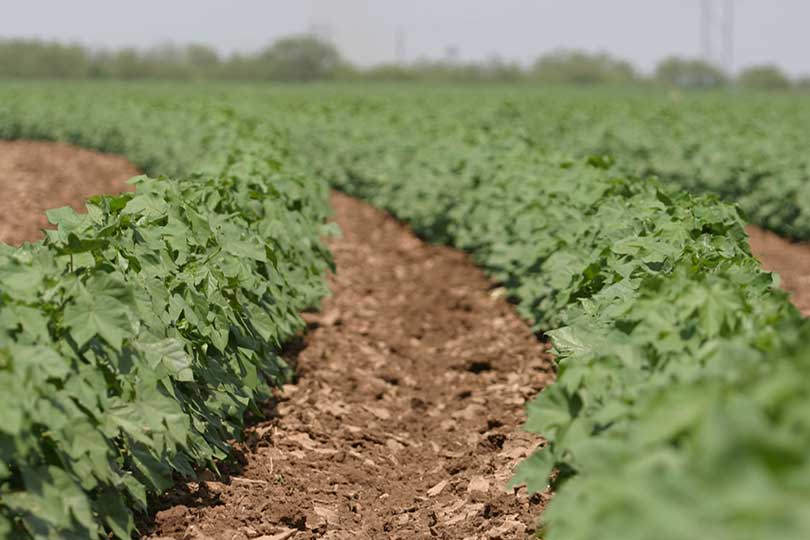Where’s the rain? Texas High Plains cotton needs a drink—for dryland production and to help growers keep up with water demand on irrigated fields, according to Southwest Farm Press.
The heat and limited moisture are contributing to a compressed bloom period for the crop, Texas A&M AgriLife specialist Kerry Siders said.
“The dryland acres have made hardly any progress the last couple of weeks,” Siders wrote in a newsletter. “I know we are not keeping up with the water demands of any crop. We need a good soaking rain event across the whole South Plains.”
Siders said that in fields with short water supply, he is seeing the compressed bloom period in which the plant will be blooming out the top in two weeks. The reduced bloom period causes yield problems for the crop.
“The fewer the nodes above white flower (NAWF), the greater likelihood of a short bloom period, or not taking advantage of time to set harvestable bolls,” Siders said.
Lack of moisture and the ability of the crop to produce a good yield are directly correlated. Siders warns farmers to be cautious when trying to compensate for the lack of water.
“Be careful. Two or three things can happen. First, it is a short crop and you continue to spend money on a big crop; and second, you back off too soon on water in fear that you will have a short crop and it forces it to be a short crop…,” Siders said.
Siders also advises farmers to continue scouting their cotton for Lygus and aphids.

